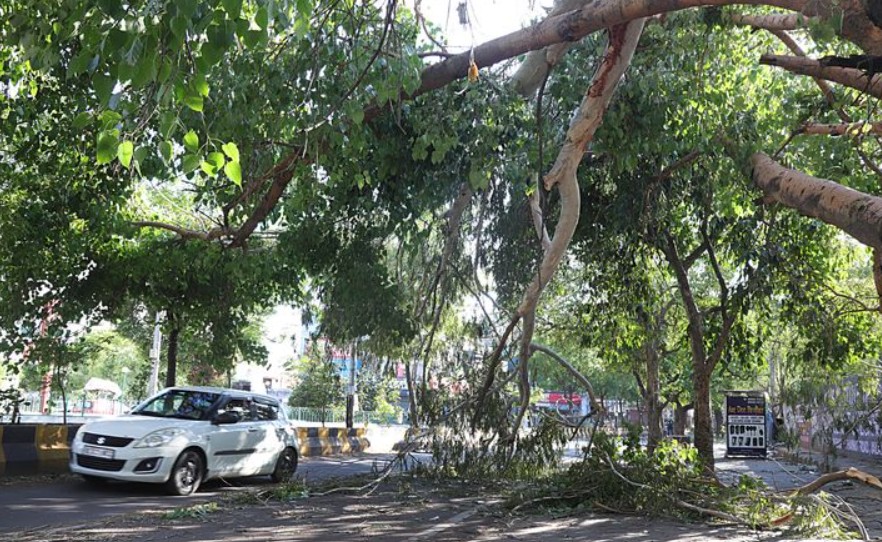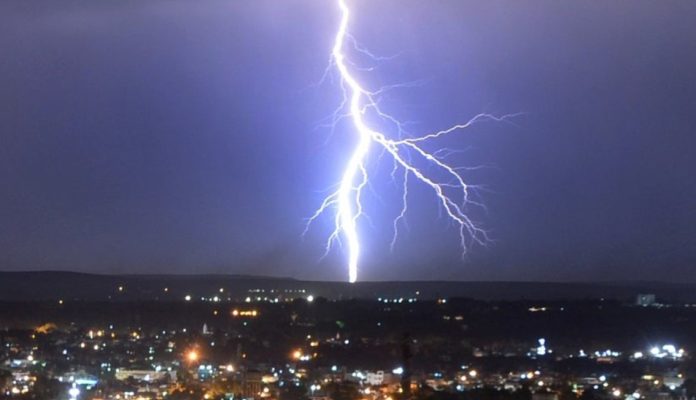A sudden, ferocious thunderstorm, unleashing its unbridled fury upon the plains of Punjab, recently wreaked devastating havoc across the region, culminating in a tragic loss of life and plunging vast swathes of Jalandhar city into an unsettling darkness. The tempestuous weather, characterized by torrential rains, fierce winds, and blinding flashes of lightning, descended upon the urban landscape with an unexpected ferocity on the evening of May 25th, claiming a precious life and initiating a widespread power outage that crippled the city for extended periods. This dramatic meteorological event not only tested the resilience of Jalandhar’s vital infrastructure but also brought to the forefront the profound vulnerability of daily life in a modern urban center to the unpredictable forces of nature.
The tragic incident, which cast a pall of somberness over the city, saw a direct fatality attributed to the storm’s violent embrace. While specific circumstances are still being fully documented by local authorities, early reports from police and emergency services indicated that the deceased individual succumbed to injuries sustained directly from the storm’s intensity, highlighting the immediate and severe dangers accompanying such extreme weather. Eyewitness accounts spoke of trees uprooted with alarming speed, advertising hoardings tearing free from their moorings, and debris being flung through the air by the sheer force of the wind. Such an unfortunate loss serves as a stark and painful reminder of the inherent risks that accompany severe meteorological phenomena, underscoring the critical need for enhanced public safety measures and rapid response mechanisms during periods of extreme weather warnings. The local community immediately responded with a mixture of shock and profound sadness, transforming the impersonal statistics of a storm’s aftermath into a deeply personal tragedy that resonated across neighborhoods and beyond.
As the storm raged with unyielding intensity, its most immediate and widespread consequence for Jalandhar was the crippling power outage that instantaneously blanketed the city. Within minutes of the tempest’s initial roar, the familiar hum of electricity faded, replaced by an eerie silence punctuated only by the distant rumble of thunder, the furious lash of rain, and the howls of the wind ripping through exposed structures. Across Jalandhar, transmission lines, many aged and strained by the sheer intensity of the sudden gales, succumbed to the immense pressure, snapping and falling like brittle twigs. Utility poles groaned under the impossible strain before toppling, further disrupting the intricate web of electricity supply. Transformers, exposed to the elements and sudden power surges, tripped or sustained irreparable damage, compounding the city’s rapid descent into widespread darkness. Entire sectors, from the bustling commercial hubs of Phagwara Gate and Model Town to the quiet residential colonies stretching towards the outskirts, found themselves entirely without power, plunging businesses into immediate disarray and grinding essential household routines to an abrupt halt.

The sheer scale of the power disruption was immense, impacting hundreds of thousands of residents and businesses across the sprawling city. For many, the initial hours of the blackout were characterized by inconvenience and minor frustration. Mobile phone batteries dwindled rapidly, gradually severing vital lines of communication and information. Refrigerators, guardians of perishable goods, began a slow, silent countdown to spoilage, prompting immediate concerns for food safety in homes and commercial establishments. Air conditioners and fans, once a ubiquitous comfort in Punjab’s warm climate, fell silent, leaving homes to contend with rapidly rising humidity and discomfort. Life in a modern urban center, so fundamentally reliant on an uninterrupted power supply for everything from lighting and cooking to communication and transportation, suddenly found itself stripped bare of its accustomed conveniences, forcing an immediate, if temporary, return to more rudimentary existence.
However, beyond the initial inconvenience, the prolonged and pervasive power outage presented a series of critical and escalating challenges. Hospitals, though generally equipped with backup generators, faced increased strain, with medical staff meticulously managing power consumption for essential life-saving equipment and relying heavily on emergency lighting. Traffic signals across the city ceased functioning, leading to chaotic intersections and heightening the risk of accidents, especially in the reduced visibility caused by the storm and the subsequent darkness of the night. Businesses, particularly those dependent on electricity for manufacturing processes, cold storage, or retail operations, faced significant financial losses as their activities ground to an abrupt halt. Small vendors and daily wage earners, whose livelihoods rely on continuous daily transactions, found their incomes immediately and severely impacted. The complete absence of streetlights turned familiar thoroughfares into treacherous pathways, raising significant concerns about public safety and security during the extended hours of darkness.
The restoration efforts mounted by the Punjab State Power Corporation Limited (PSPCL) were initiated with immediate urgency but were fraught with immense difficulty and inherent dangers. The sheer scale of the damage, scattered across a vast and densely populated urban area, presented an enormous logistical undertaking that required Herculean effort. Repair crews, working tirelessly through the night of the storm and into the following days, faced formidable obstacles at every turn. Countless fallen trees, obstructing crucial roads and entangled perilously in power lines, had to be meticulously cleared before any repair work could even commence. Widespread waterlogging in many areas made access to damaged infrastructure challenging and inherently hazardous, slowing down the pace of repairs. Moreover, the ever-present risk of electrocution, a constant threat when dealing with live wires in wet conditions, necessitated extreme caution and strict adherence to safety protocols for the dedicated restoration teams. PSPCL personnel, comprising experienced engineers, skilled technicians, and tireless linemen, battled fatigue and the continuing after-effects of the tempest, striving with unwavering commitment to restore normalcy against truly overwhelming odds.
The process of bringing Jalandhar back online was, by necessity, incremental and painstaking. Initially, efforts were strategically focused on restoring power to critical services such as hospitals, essential water pumping stations to ensure civic supply, and vital government facilities to maintain administrative continuity. Gradually, power began to trickle back into residential areas, often in a phased manner, as individual feeders and substations were repaired, tested, and brought back online. The collective sighs of relief that swept through neighborhoods as lights flickered to life in one area, even as others remained stubbornly in darkness, underscored the city’s profound sense of collective anticipation and lingering frustration. Despite the diligent and heroic efforts of the restoration teams, the comprehensive restoration of stable power to all affected areas was a painstaking process, requiring days rather than mere hours, particularly for those localities that had suffered direct and extensive damage to their complex local distribution networks.
This episode of thunderstorm havoc served as a stark and undeniable reminder of the urgent need for robust, resilient infrastructure and proactive disaster preparedness in the face of increasingly unpredictable weather patterns. While nature’s fury cannot be entirely tamed or predicted with absolute certainty, the incident in Jalandhar has undoubtedly prompted renewed and urgent discussions about the imperative for comprehensive modernization of the city’s power distribution network. This includes exploring the feasibility of underground cabling in particularly vulnerable areas, securing greater and sustained investment in truly storm-resistant infrastructure, and implementing improved early warning systems that can provide more lead time for residents to prepare. It also highlighted the crucial role of community resilience, as neighbors aided one another during the prolonged outage, sharing resources, offering shelter, and providing vital emotional support.
As Jalandhar slowly but surely emerged from the lingering shadow of the storm, with electricity gradually returning to all corners of the city and the debris of fallen trees and damaged structures being meticulously cleared, the profound memory of the past few days lingered. The tragic loss of a life, the pervasive darkness, and the widespread disruption served as a poignant and enduring lesson in humility before the raw and untamed power of nature. It reinforced the imperative for continuous investment in critical urban infrastructure, meticulous planning for comprehensive disaster response, and an unwavering commitment to public safety, all designed to ensure that the city is better prepared to face the unpredictable challenges that lie ahead. The ordeal, while undeniably difficult and sorrowful, ultimately showcased the quiet fortitude and resilience of a city determined to recover, rebuild, and learn, piece by painful piece, from the storm’s unsettling and transformative aftermath.


